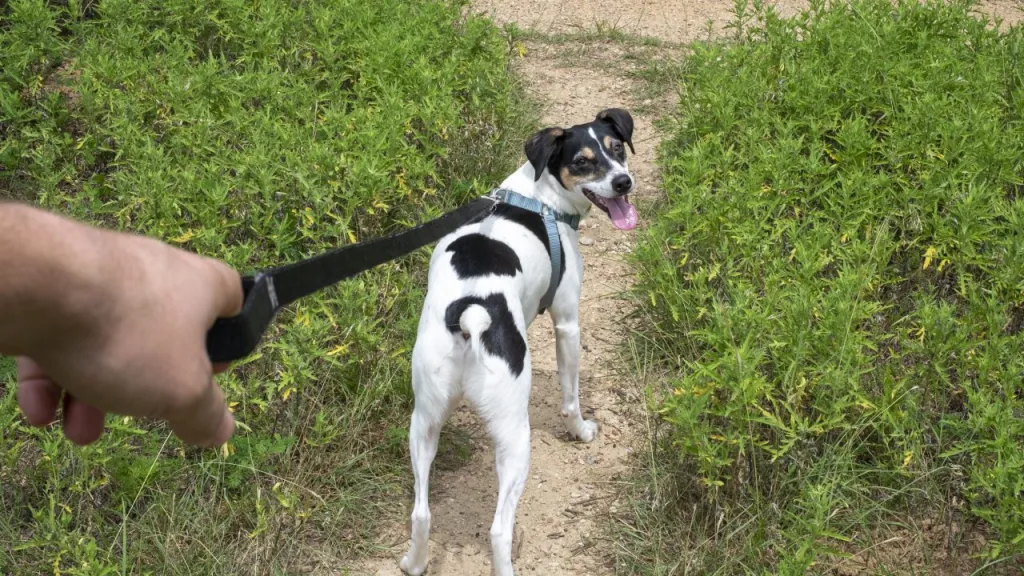Forging ahead is the biggest problem when walking dogs on a leash. Dogs pull on leashes for a variety of reasons. Many adolescent and adult dogs pull on their leashes because they were allowed to pull as puppies. But, walking your dog doesn’t have to be a frustrating experience.
Why some dogs have trouble walking on a leash
Once the leash is tightened, your dog no longer has to pay attention to you since they have a taut telegraph wire through which they may sense your every move and even your very intentions, thus freeing their nose, ears, and eyes to explore around them. Also, it would appear that pulling on the leash is intrinsically enjoyable and self-reinforcing for many dogs. The challenge becomes a fun workout — testing their limits. Whatever the reason, leash-pulling is usually unacceptable and can be dangerous. Once the leash is tightened, you can no longer control your dog.
Start training in puppyhood
It’s considerably easier and smarter to first practice all of your walk training exercises with a young puppy on a leash indoors. It’s good to keep practicing indoors until your puppy can walk without pulling. From there, you can transition outside for short bouts to get your puppy used to the outdoors, as well as to practice leash manners with more distractions.
By starting early, you can avoid issues once your puppy is older, stronger, and more likely to be punished for their bad behavior. Remember, the canine weight-pulling record is in the region of 10,000 pounds. In just a few months, your average dog may have the power to pull an entire group of people!
Stay calm, don’t jerk
Using a leash to walk is necessary as a safety precaution, and leashing your dog is mandatory when leash laws are in effect.
Once a pet parent and a dog are connected with a leash, the dog may pull. And to stop the dog from pulling, usually (but not always) the human pulls back, i.e., they jerk on the leash. Most dog lovers find this unpleasant, and it isn’t much fun for dogs either. Since we don’t want the dog to associate walking and heeling with numerous physical leash corrections, it’s best to avoid jerking or pulling on your dog’s leash.
Red light, green light
This is a great way to work on impulse control while walking. Start with your pup on leash. Firmly grasp the end loop with both hands held close to your body. Stand perfectly still, and pay absolute attention to your pup, but ignore all antics at the other end of the leash. Eventually, your pup will sit or lie down. It can take a few minutes before they do, so patience is key.
When they do so, immediately say “Good dog,” and offer a treat. Then, say “Let’s Go,” take one step forward, and then stand still again. Be prepared; taking a single step will energize your pup, and they will lunge with excitement. Again, ignore any antics, and wait until they sit once more. Then, reward your dog, take another step, and stand still again.
With successive trials, have your dog sit for progressively longer periods before praising them and taking another step. Once it’s possible to alternate single steps with standstills without your pup pulling, try taking two steps at a time before standing still. Then try three steps, four steps, and so on.
Once the sequences have expanded to six or seven steps, you are now walking your pup on a leash without them pulling, and they will sit automatically by your side whenever you stop. If your puppy ever tightens the leash when you are walking, immediately stand still and wait for them to sit again before moving on.
Get outside
Now you’re ready for several laps around the block. Dogs will tend to forge when leaving home but lag when coming back. If your pup pulls on the way out, about turn, and head back home to start again. You can also work on “red light, green light” in your front yard or on the sidewalk outside of your house until your pup is less distracted. While the first trip around the block may take a long time, the second and third laps will get progressively easier.
Take time to sniff
While it’s great to have your dog always heeling at your side, it’s also important to give your dog time to stop and sniff around and relieve themselves. Be sure to take “sniff breaks” along the way. Here, you can give your dog a little extra leash to explore. Once they’ve had a few minutes to sniff and do their business, you can call them back to sit at your side before continuing the walk.
While walking on a leash can be a challenge, a bit of patience and hard work can go a long way. Need some more leash training tips? Check out five tricks to help you walk your dog. Or, view some additional tips and techniques to help when your dog pulls on the leash.









